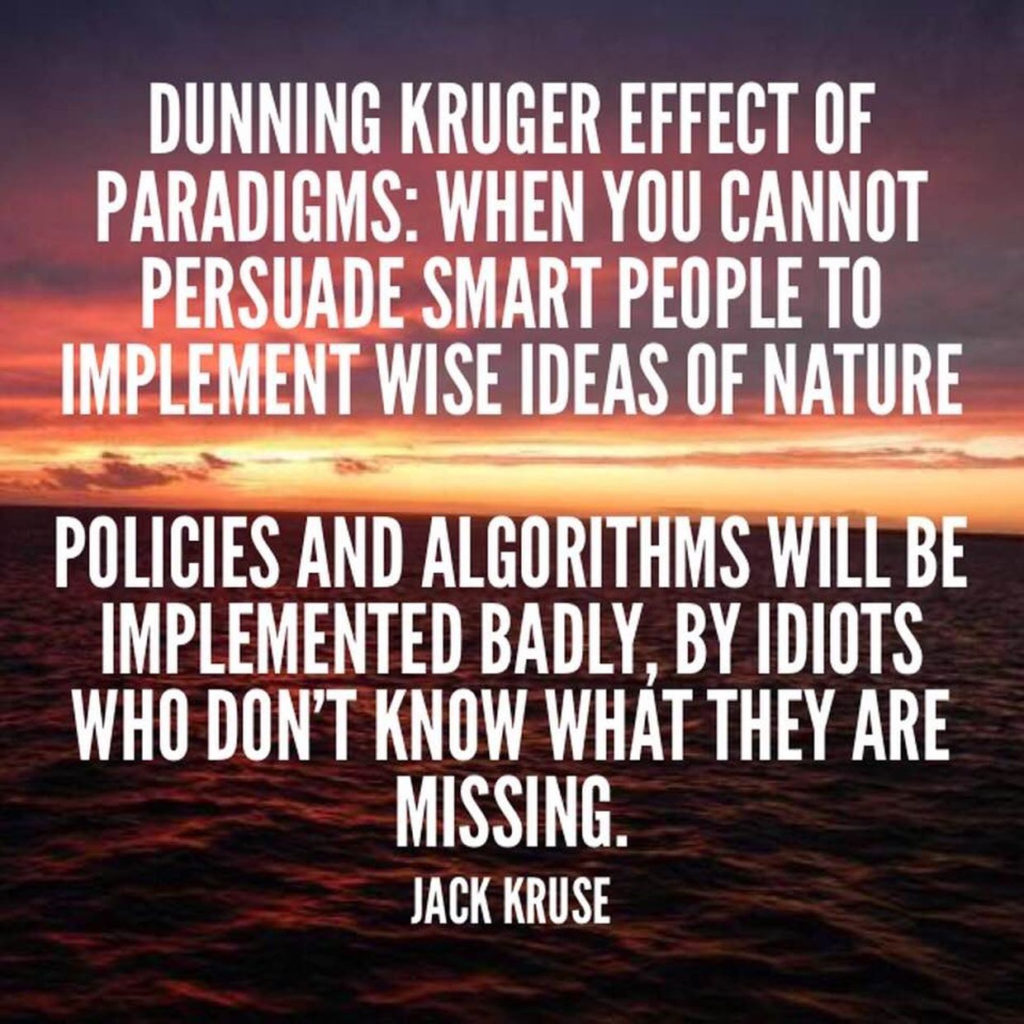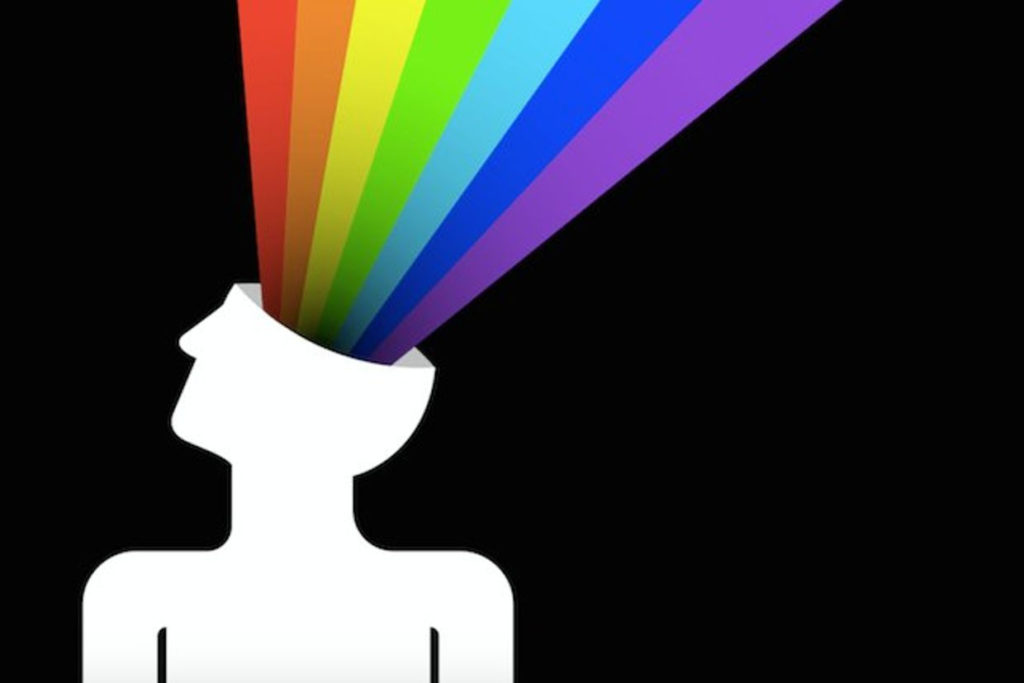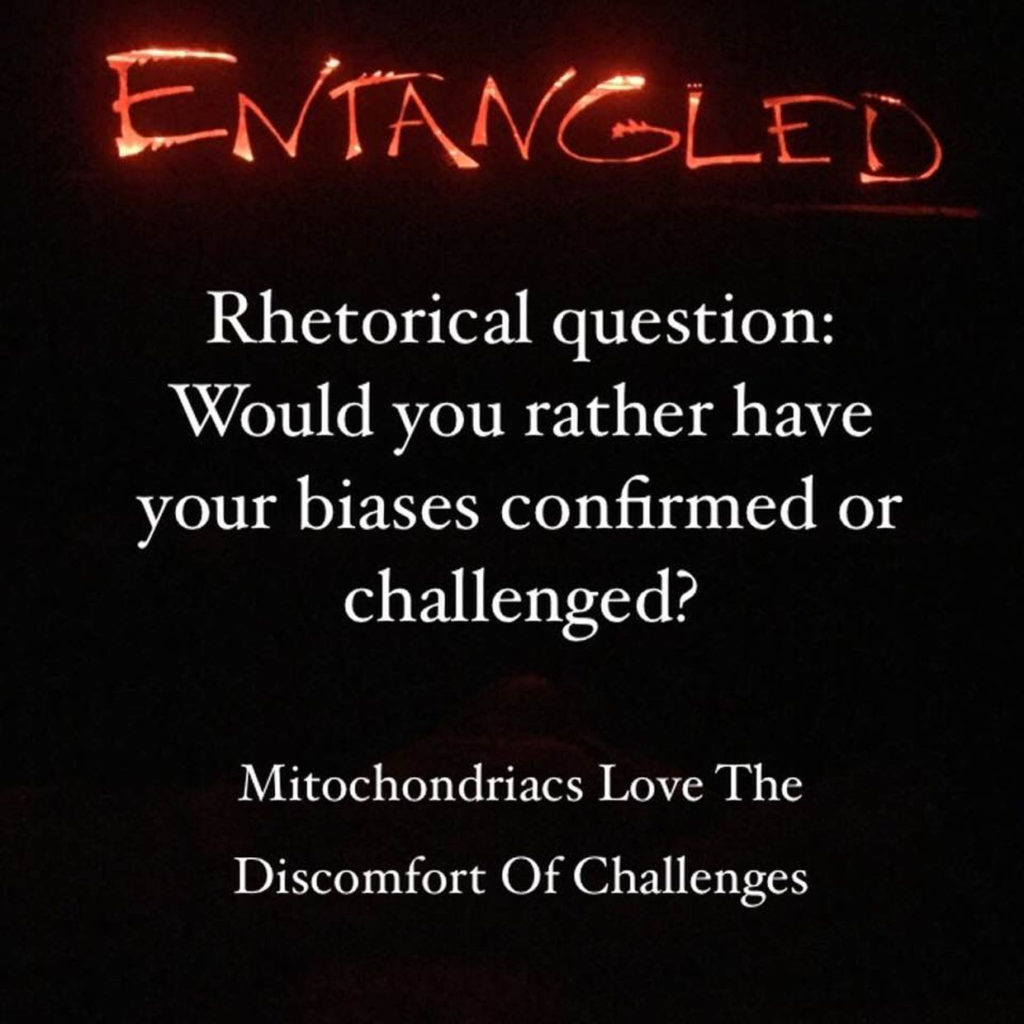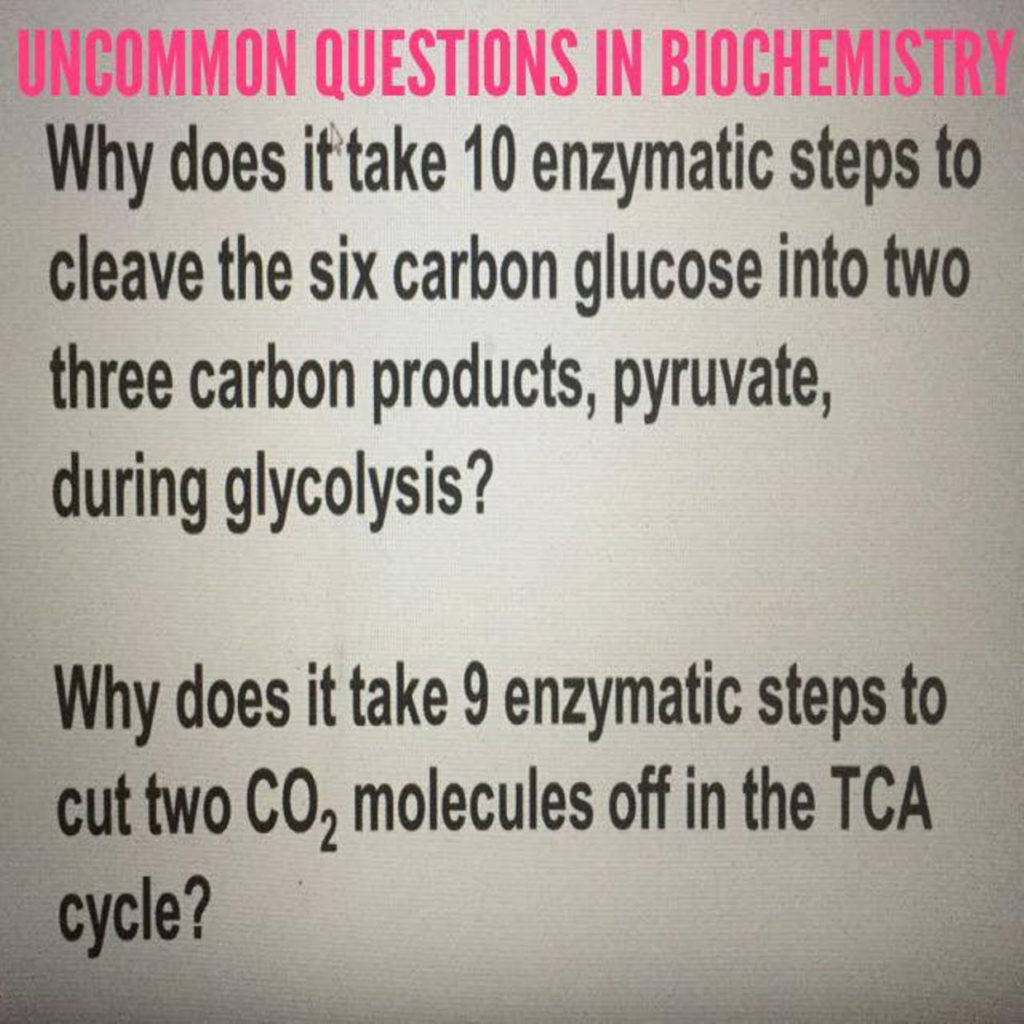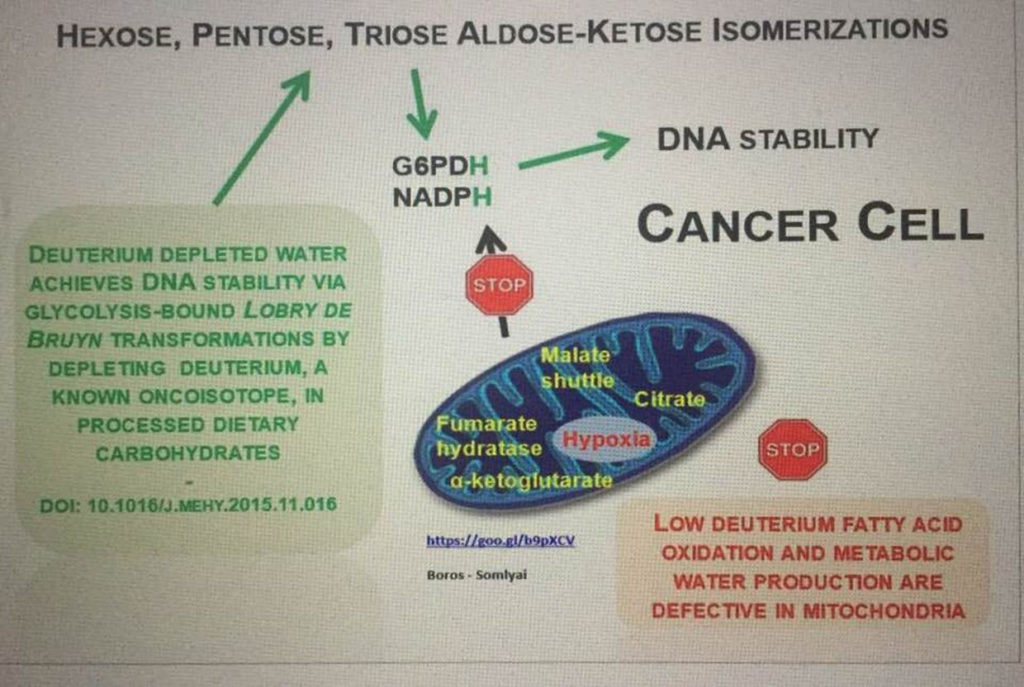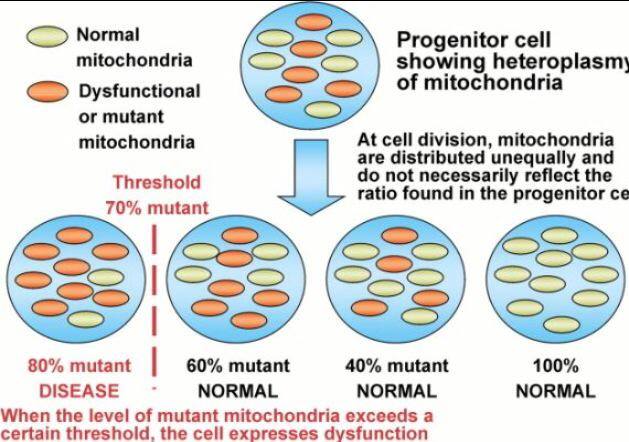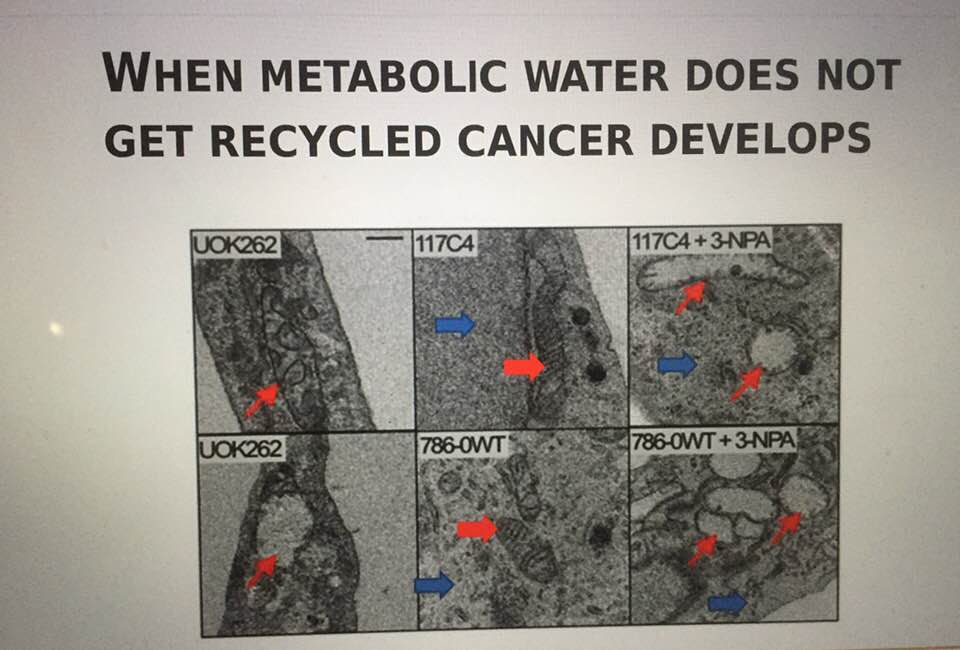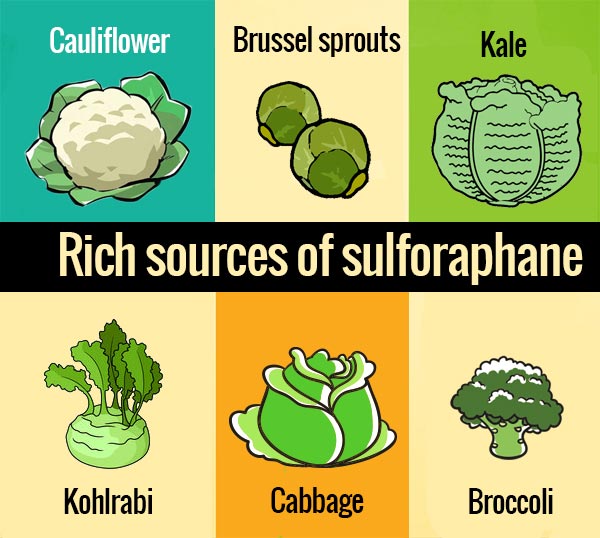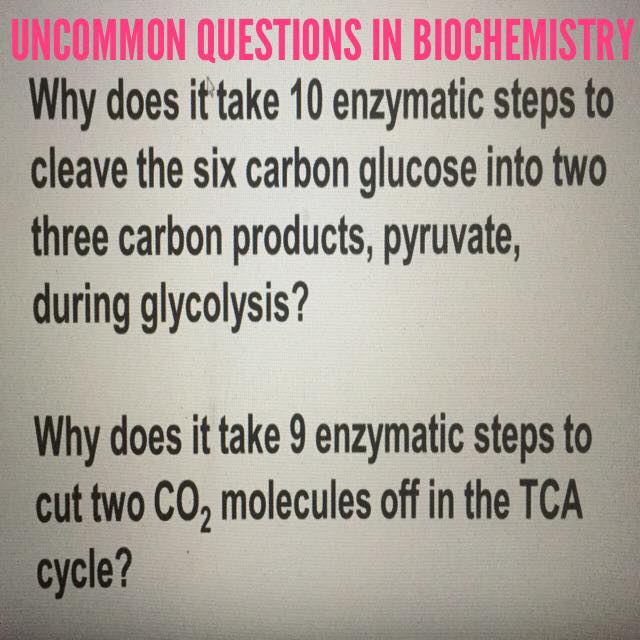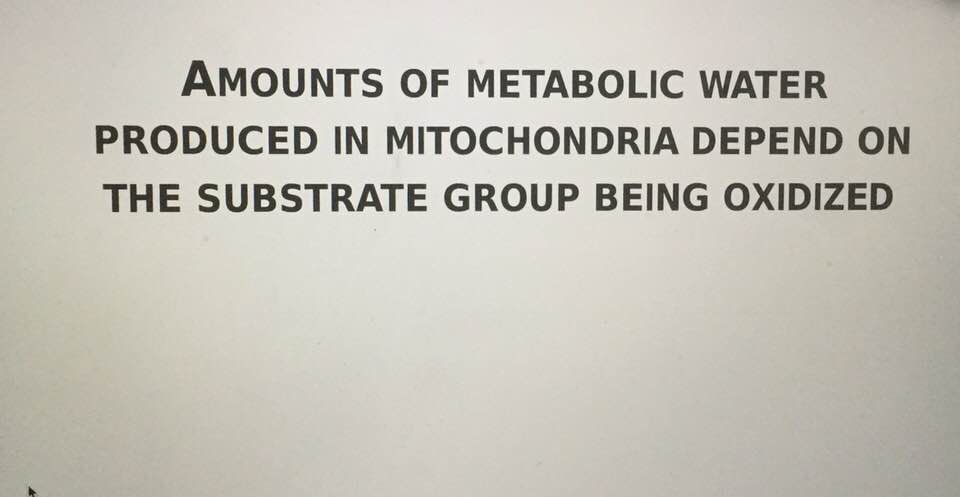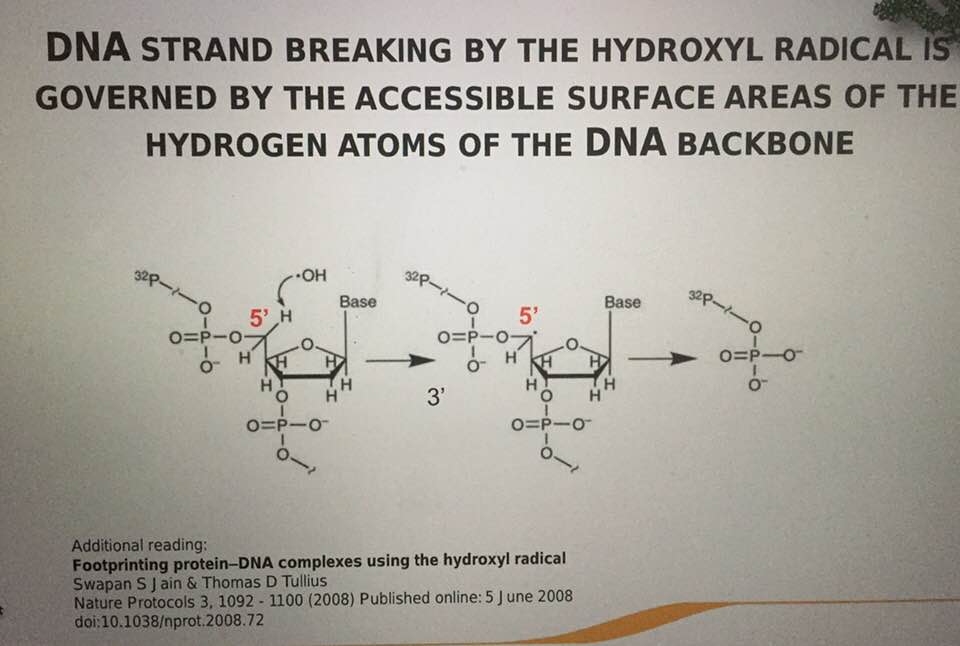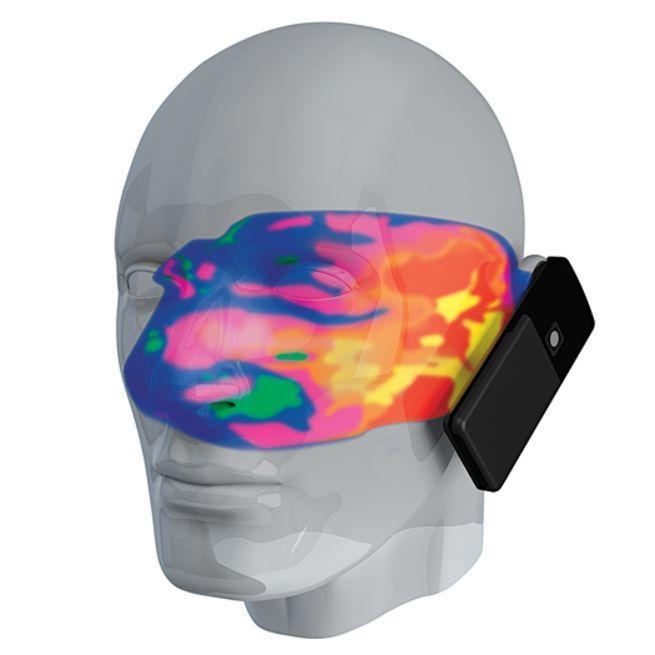
How much do you know about hydrogen? I know I have taught you a lot about here recently, but do you think you’ve tied it all together to really understand how it all links to sunlight?
Bright light always induces stress and swelling and that small swelling stress stimulus is needed for life to awaken but the dose makes the toxin with respect to blue light. Blue light induces this stimulus by allowing more deuterium into the tissue irradiated with it to create some molecular crowding to stimulate growth. The red light limits the molecular swelling if it is present to control swelling and create regeneration by lowering the amount of deuterium within the cytosol and matrix. AM light provides this stimulus to awaken us and then red light regenerates the thickening of the retinal tissues so there is no excessive growth generated in the central retinal pathways, hypothalamus, the leptin receptor, and eventually the subcutaneous fat mass. Full spectrum sunlight contains the antidote of blue light just as seafood contains the antidote for heavy metals by having high levels of selenium to help improve the semiconductive electric currents in the lipid rafts of cell membranes. The AM blue light is designed by nature to create a quantized amount of swelling to stresses the anterior pituitary to make adrenalin, noradrenalin, cortisol, alpha MSH, beta endorphin, TSH, estrogen, and prolactin. UVA light is the light stimulus that turns off the optical deuterium switch to limit molecular crowding and curb the pro-growth stance of blue light. When you use fake light with a blue color temp of technology of 5700K, the light stress provides a chronic pro growth stimulus that never can be moderated because technology contains no UV or IR light to blanche the effects of blue light on deuterium. In this way deuterium is an optical switch that promotes growth. When it loses its solar light controls it becomes what causes the Warburg shift in oncogenesis.
Deuterium has a different magnetic moment than a proton. The ATPase is the magnet they work with. The magnetic moment of a magnet is a quantity that determines the torque it will experience in an external magnetic field. The Earth provides that external field. Deuterium has a large increase to its magnetic moment because of the addition neutron to the proton. The ATPase is a nano electromechanical torque magnet that exclusive works with the light hydrogen proton in the ATPase.
The ATPase is 100% quantum mechanical efficient torque engine with red light (600-3100nm). The measured magnetic moment and QED theory taken together, yield the most precise measured value of the fine structure constant in nature. Electrons are the mustang’s of life. They are constantly are mobile when life is present. Protons are corralled horses controlled by the sun. We obtain the action of life when we multiply energy by time. They are the actors of life whereas the relatively static proteins are the stage the drama of life begins. Life needed a conductor and quantum mechanics provided star light as that conductor that make proteins electronic conductors who use proton recycling to power complex nano machines in cells. The movement of electrons is key to life because it powers proton recycling and deuterium depleted matrix water makes proteins become carbon based semiconductors. Without deuterium depleted matrix water proteins are insulators and the atoms become inanimate. Life is animated. There are many ways of knocking electrons out of atoms. UV light is the most accessible to life. The simplest is to rub two surfaces together, but life chose to use sun light to do it for a specific reason. It is close to a free lunch as one could get on a planet being bombarded by light for 4.6 billion years by some version of sunlight. Sometimes we just fall into things that we don’t even seek to understand and nature uses it. These are the things that make life interesting. Electrons, in living things, are something I just fell into. And it caused me to understand how life used the asymmetries in protons in glycolysis, the PPP, and the TCA cycle to make water from sunlight to reverse photosynthesis and create the sea inside of every cell to make complex life possible.
Today, I am going to do just that. Watch the video above before proceeding.

Why won’t a biochemist ever solve cancer? (they subtract bio-physics from the equation of life and think this will explain it)
Light in the lab is not the same as sunlight. To get the answer you need to know this fact. So all studies on deuterium depletion effects and H+ fractionation must be done under sunlight to see the true effect in glycolysis, TCA, and the PPP. This is why metabolic ward studies will never equal what Weston A. Price observed in nature. It is why WAP and Schweitzer never saw cancer in the indigenious people they studied. They can never be equivalent. Is this why they never observed cancer? Is it why we are seeing cancer in modern man grow like mad? Yep.
Physics has proven millions of times in their experiments that the structure of mass determines the frequency it can resonate and this frequency dictates structure of plasmoid instabilities and the type of light that will work with it and what frequencies won’t. Biologists, specifically biochemists refuse to realize that this process is what drives biochemistry. Light from the sun has the ability to act in non linear fashion. what does non linear mean? It means a small stimulus leads to seismic changes. How can we disprove bio-chemists ideas right here in this thread? If you add one methyl group with it 3 hydrogens to the right cytosine of RNA or DNA it COMPLETELY CHANGES its bio-chemical and physiologic abilities. That is defines a non linear change. It is well past time we all realize this. Life is fundamentally bio-physical and not bio chemical because the manner in which bio chemistry works is when small things change, like the ratio of H+ to deuterium massive changes occur inside the TCA cycle.
This is why cancer occurs. It is a biophysical change inside the matirx which alters the pH and temperature of the water the matrix makes and this ruins the kinetics of the TCA to not allow it to function as cycle. It becomes a linear pathway and that pathway is what the Warburg shift describes to a T.
So I want to stop now an ask a question you have all heard before. Why does the Warburg shift favor glucose and glutamine when both bio-molecules are non essential to humans?
We can live perfectly fine without sugar and glutamine. In case you don’t know, glutamine is a non essential amino acid. Thus even if you eat none your body will produce what it needs from other sources. So it raises a really good question that bio-chemists, who have never figured out why the Warburg shift happens. Why does a broken TCA cycle want glucose and glutamine exclusively in a cancer state??
What is it about glutamine and glucose that is seemingly so critical in a cancer state?
This question of being “non essential” was critical in me asking the right questions of why young people were getting brain cancer in the early 2000’s at exponetial rates. Remaining curious is why it is critcal to understand why cancer cells make specific food sources essential when your mitochondria have high heteroplasmy rates. I found the answer was simple. In a cancer state we need a reliable vast new proton source that can be added into a broken metabolism to fix the problem of making DDW in the matrix.
So how did I figure all this out?
Let us tackle the glutamine issue first. Cancer needs glutamine to recycle TCA intermediates when the TCA cycle is filled with intermediates that are loaded with deuterium. This turns the cycle into a pathway. It can no longer operate as a cycle. When a cycle breaks it means allosteric and enzyme control is gone. This is why ROS and RNS signaling looks so biazarre in an cancer state. So the cell has to make glucose and glutamine 100% essential in those states where TCA intermediates have the wrong isotope in them. That is why glutamine and glucose metabolism is up-regulated in a Warburg shift. It also explains why AMPk pathways are raised in cancer, because it only goes up when ATP levels drop. They drop because too many protons are deuterated and this slows electron chain transport from NADH to oxygen. The result is simple, NAD+ drops, ATPase spin rates slow, the magnetic field of the ATPase slows and since oxygen is paramagentic is is no longer drawn to the ATPase. This causes a pseudohypoxia or hypoxic state. When hypoxia is chronic the cell has two choices. Default to the more ancient system of metabolism that used to control hydrogen flows in its H+ state under the power of photosynthesis. Glucose and glutamine.
Glutamine enters the TCA cycle before the fumerase step so it can repar and fix the TCA proximal intermediates via alpha keto glutarate step. Remember in this state, the cycle is no longer a cycle because of the kinetic isotope effect of deuterium on how it makes bond strengths between TCA intermediates 6-8 times stronger. This effects the way the enzyme kinetics are in a cell.
So if you’re staying with me you probably are beginning to see why glucose is up regulated too now aren’t you?
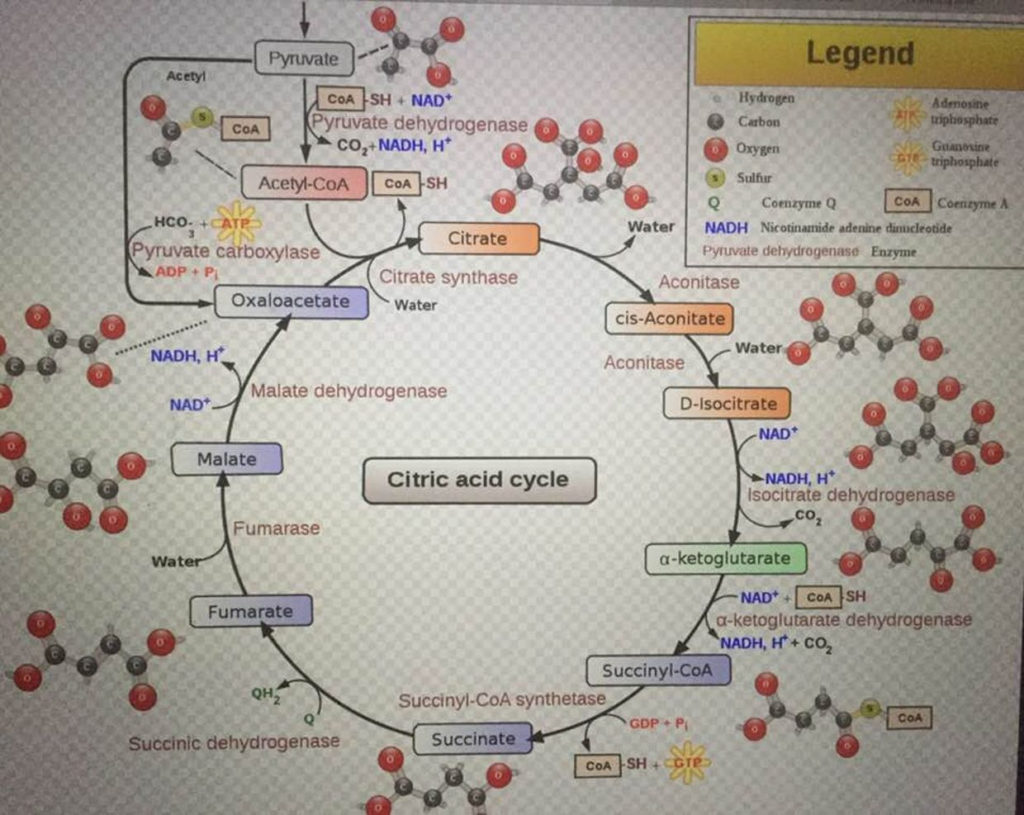
If you aren’t making the connection because you’re bad at science I will give you a boost. Glucose has 6 carbons and it is a ring. It becomes two 3 carbon linear molecules called pyruvate. Look above. See where it enters the matrix of the mitochondria? In the beginning. It can only get in if NAD+ is HIGH. Don’t forget this. That is cytochrome 1 of the inner mitochondrial membrane because a low NAD+ means a LOSS of membrane potential or redox inside the matrix. Now, what did I say about this in the Decemeber webinar of 2017? Yep………..you’re getting wise by being a Patron or member.
Now ask yourself this: Why does it take cells ten enzymatic steps to cleave 6 carbon sugar into two 3 carbon pyruvates when it appears way easier to do in a lab with a lot less steps? Then I asked yourself why does it take 9 enzymatic steps to remove two CO2 molecules in the TCA cycle? Ya’ think it has anything to do with the fact that the mitochondrial matrix reverses the photosynthetic reactions that take CO2 and H20 and make glucose? Take a look at this picture from my Vermont 2017 video on youtube. You think I had this all planned for to explain to all in step by step fashion? Yep.
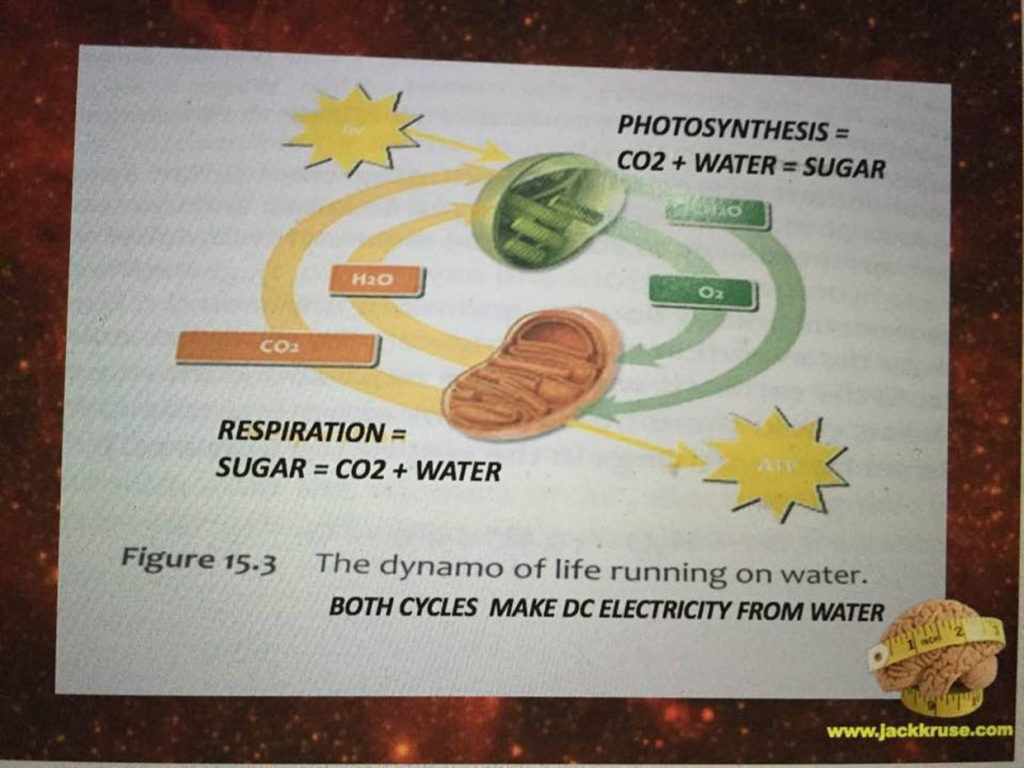
So how does nature provide water for the photosynthetic web folks? How does rain form that falls on our head on Earth at different latitudes? Is the information in hydrogen movements somehow tied to the sun and water cycles in ways that bio-chemists are clueless about? Yep.
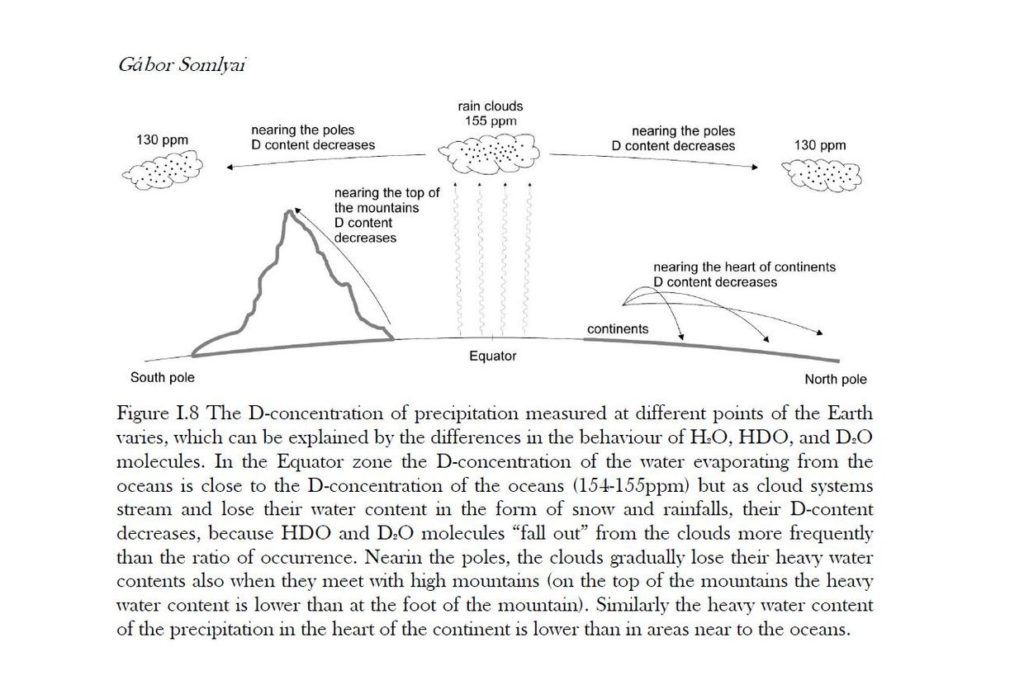
Now I want you to stop and watch the video below before proceding to blow your mind in explaining why the Warburg effect is seen in cancer states.
A cancer biochemist recently asked me at a conference, “what would cause the tumor to prefer glutamine over glucose if both can provide TCA intermediates? That’s something I have never been able to figure out.”
My answer was simple. I told him it was due to the heteroplasmy rate in the matrix and the simultaneous oxygen deficit in tissues.
He looked perplexed. He then followed up by asking, “I was wondering based upon your hypothesis why do only certain cells develop into a metastatic biomass? If deuterium accumulation is the problem how does it selectively create biomass? In other words, it seems as if this would become a systemic problem.”
I went on to explain that mitochondrial origins are bacterial, so when the broken matrix sustains enough deuterium damage, and cannot be taken out by mitophagy by a SO pulse at cytochrome 1, mitochondria regain ability to move from the cells in the cytoarchitecture of the tissue to find a new oxygen source and a new source of H+.
They become a damaged bacteria looking for a better environment. They look to leave and migrate from their current local environment in their host looking for a new terminal electron acceptor to survive and make energy.That is what metastasis is.
This is why in metastatic brain cancer, mets always go to grey white junction in the neocortex where the best mitochondrial density is located and where oxygen tension are huge because this is where blood eneters the brain. I reminded him about some basic anatomy of the brain. Arteries feed in from the subarachnoid space into the substance of the brain. So this means oxygen delivery in the brain is unique. Oxygenated blood enters brain via the surface. All cancers are hypoxic and look for new oxygen sources. Neovascularization is rare in the brain except in grade 4 gliomas which are deadly. Those glioma’s are called glioblastoma multiforman.
Every tissue has a variable metabolic rate and heteroplasmy rate. The brain has a massive metabolic rate and normally has to run on a low heteroplasmy rate. If heteroplasmy spikes for any reason neurologic function in that area will manifest. This is what headache, tinnitus, and myopia are all.
In brain cancer the second heteroplasmy spikes thermodynamics are no longer maintained. The brain can only tolerate a 4 minute insult. So when the brain’s TCA cycle is altered it is a big deal for physiologic function. This is why the brain’s mitochondria must control deuterium fractionation to maintain their super metabolic rates. Glutamine enters TCA before fumerase step so it helps repair the hydrogen source to the proximal intermediates of the TCA cycle via alpha keto glutarate. We must remember that deuterium has an massive increase in bonding strength so the TCA can no longer cycle or turn forward. Deuterium turns the cycle to linear biochemical pathway, so complex enzyme kinetics controlling hydrogen recycling are destroyed.
So neurons and glial cells need ways to get hydrogen substrate from glucose and glutamine because pyruvate cannot get in to them in the matrix as electrons on the electron chain transport system slows down. At this point his eyes got big. He realized immediately that just knowing bio-chemistry was not enough. You need to understand both bio-physics and the biochemistry to make sense of the Warburg shift.
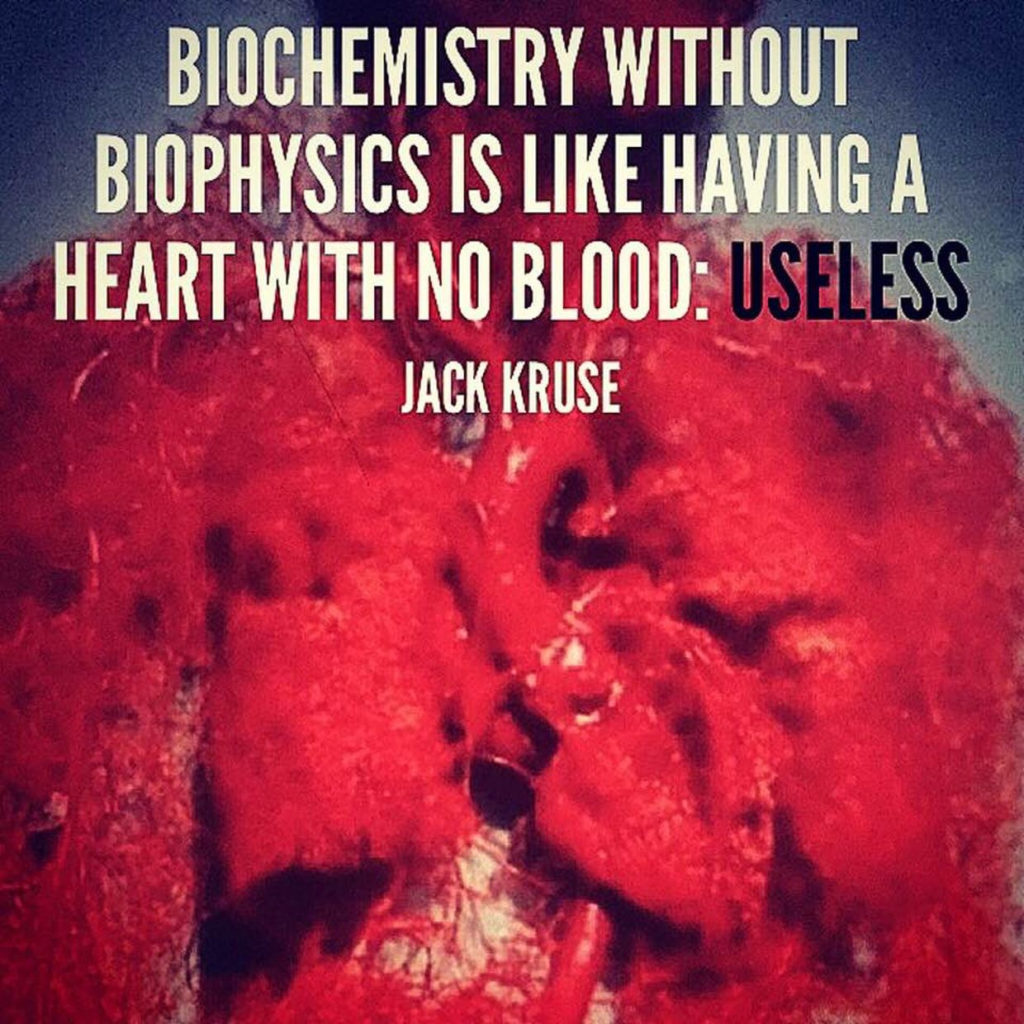
WHAT ABOUT THE REACTIVE OXYGEN SPECIES IN CANCER?
ROS is a result of the cycle becoming a linear pathway and not a cycle. There is too much oxygen available and not enough hydrogen present to complete reactions. When too much oxygen is present and not enough hydrogen present ROS results. You get a lot of free radicals because the reactions kinetics are no longer controlled by sunlight and oxygen at each end of the redox chain.
When this happens amount of oxygen needed is no longer control by light frequencies at NADH. People forget NADH is a fluorophore protein that absorbs light at 340nm. This step is quantized by the sun. So ROS is not really pathonmemonic of cancer. It is proof that the matrix intermediates are dysfunctional. Just thinking reductively about ROS will never lead you to the right cause of the matrix dysfunction.
I want to remind you about what occurs in diabetes. What makes diabetes and cancer the same, yet different? Diabetics have no free radical superoxide (SO) burst. This burst is what stimulate mitochondrial apoptosis which can take out defective mitochondria. It occurs at cytochrome one where NAD+/NADH couple reside.
It is why most diabetics get fatter too, because their mitochondrial matrix cannot perform beta oxidation of their subcutaneous fat at night when they sleep. They tend to have mitochondria with pseudohypoxia and not frank hypoxia. The reason is simple. The amount of damage to the TCA hydrogen recycling determines how much oxygen is present or not in the matrix. Cancer is a hypoxic state and diabetes is a pseudohypoxic state. SO is a free radical that we need to get rid of bad mitochondria. Neither disease has enough of it. All free radicals have unpaired electrons. Cancer can or cannot have ROS or RNS depending upon oxygen supply to the tissue.
This explains why DM and CA are linked to a dynamic deuterium effect that can or cannot flow into cells. See deuterium is not always bad, it just appears to be this way when you do not understand how it works to make the metabolic rate of a tissue.
Diabetics have a lot of deuteration of the TCA cycle, but not enough to get to the cancer state. Small superoxide bursts lead to seismic changes in tissues. This defines a non linear effect. UV light is the only frequency from the sun that can participate in non linear effect and the NADH cannot be recycled when the TCA cycle is gunked up with deuterium. This is why NAD+ is always lowered in diabetes, aging, cancer, and any disease. This was found in David Sinclair’s paper in December of 2013. This is why ROS is all over place in different cancers. They all have variable defects of TCA dysfunction. Normally NADH light (340nm) is THE non linear stimulus in mitochondrial matrix to create DDW. This is why Dr. Doug Wallace has always found heteroplastic mitochondria seem to have water trapped in the matrix when he has examined it under electron microscope.
Normal ROS creation is only controlled when its quantized by the incident light at cytochrome 1 the NADH/NAD+ couple. It’s quantized only when ECT electrons and TCA protons are moving freely in the DDW crystalline water made in the matrix under the power of frequencies in sunlight.
Most biochemists are at a loss to explain hydrogen motions in a matrix and why they are key to understanding brain cancer. Today, I am going to solve for X and show you why being a clinician and understanding both bio-physics and bio-chemistry is a must in understanding the biology of any cancer.
SO WHY ARE KIDS GETTING BRAIN CANCER AT ALARMING RATES?
I need you to become inspired to look into the conformational change of the in biochemical pathways and in any receptors in any cells due to hydrogen and to deuterium fractions they contain (H+/D ratio). These changes change how bio-chemical pathways can or cannot function when the matrix can no longer recycle protons in the matrix. Remember Dr. Doug Wallace has taught us all that 85-90% of chronic diseases are mitochondrial, so what I am going to explain to you will explain most of those diseases as well. Yep, it is that big folks.
You have to begin to ask yourself to what degree does the amount of H+ and deuterium alter function and the exchange of H+ in glycolysis, TCA cycle, and in the PPP. When you do, it turns out, deuterium affects the observation of interactions/reactions that all biochemists take for granted. It uncovers their Dunning Kruger effect of bio-chemists for you all to see and why I have disdain in my heart for them.
The ATPase needs a chronic and fast source of H+ all the time to run the ATPase at 100% efficiency. Red light is the incident light source that pushes the protons between 600nm and 1600nm. It turns out 1538.5 nm is really important frequency for that proton electric current Becker found long ago to drive regeneration in mammals. It was confirmed by Del Guidice and Preparta in 2000.
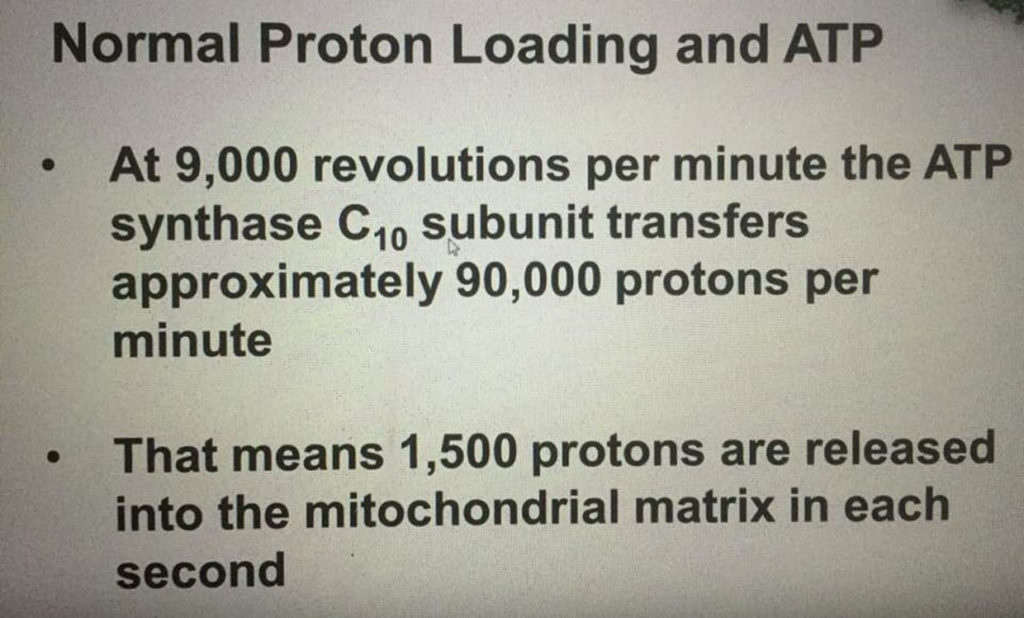
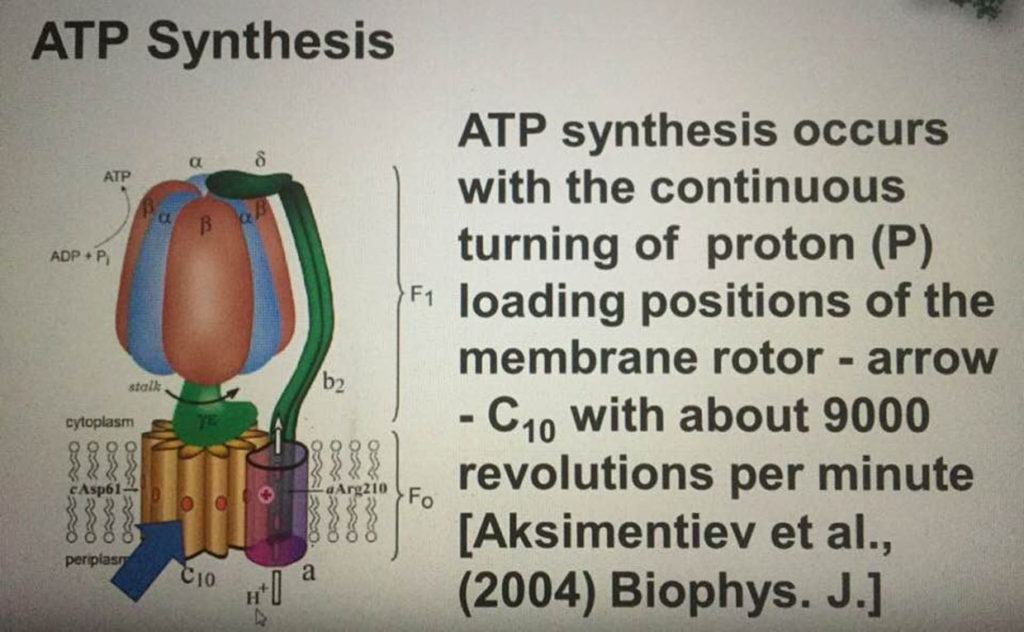
HOW DID I FIGURE IT ALL OUT AS A BRAIN SURGEON?
I saw a massive increase in glioma’s at the end of my residency at LSU. So I asked a buch of bio-chemists why this might happen. Here is how the story unfolded.
Glutamine import and metabolism through the TCA cycle has been shown to persist under hypoxia/pseudohypoxic conditions. This told me that glutamine has to be important in a cancer state when it was clearly not important in a state where oxygen tensions were high. Remember what I have already taught you as members of jackkruse.com, namely that, low NAD+ = pseudohypoxia = Leptin resistance.
The bigger key for understanding this dicussion is that glutamine contributes significantly to citrate carbons in the TCA cycle pictured above. Why is this a big deal to us mitochondriacs? Why do biochemist food guru’s whiff on this insight?
One has to look at glycolysis differently if you are a mitochondriac or quantum biologist like we are. If you look at what happens to hydrogen’s only in glycolysis, from glucose to pyruvic acid conversion in glycolysis, before the TCA cycle entry as acetyl CoA, you will see the real function of the linkage to glycolysis and the TCA cycle in a living system.
Glycolysis is a “primer catalyst” (H+ exclusivity) reaction acting as a more “ancient dehydrogenase mechanism” to remove hydrogen atoms from specific carbons in glucose. It appears nature is particular. Living cells will chose to oxidize these dehydrated carbons once pyruvate enters the TCA later in the TCA cycle. This is conserved in the TCA cycle when acetyl Co is formed in the matrix. This tells us black swan mitochorndriacs that glycolysis is the older evolutionary system compared to the TCA cycle. When life was less complex it could live off a linear pathway. Now it cannot. It also means the TCA cycle is a new generation hydrogen furnace.
It is why the TCA cycle is a much more complex dehydrogenating conveyer belt, built into a cyclic format in the matrix instead of the older bacterial version of glycolysis that was in the cytoplasm and was a linear strand of bio chemical reactions. Stop. Where did a mitochondria come from? Bacteria. Thanks Lynn Marguilis. Mitochondriac lesson well learned.
This linkage is lost on most bio-chemists because of how they were taught. Remember all doctos learn bio-chemistry from them in medicial school so this is why most doctors are clueless about this too.
The specificity of carbon oxidation position is related to hydrogen position in glucose. Here we see the relativity of size and positon impact the thermodynamics of the cell. This tells the quantum clinician and the astute biologist to pay attention to why nature is using all these crazy steps to control enzyme kinetics in the matirx. It does not make sense unless you understand evolution. Nature is doing this quantum dance very carefully for a deep reason. If you are wise and a mitochondriac, you might learn something new about bio-chemistry that you never realized before. I did that day back in the late 1990’s.
The bio-physics of this hydrogen quantum dance underpins the pathways’ machinations (why there is so many enzymatic steps) and those moves are important for reasons that underpin the bio-chemists Dunning Kruger effect to fail to account for it in living cells. In fact, if you look close at these reactions you’ll see that enolase removes a H20 molecule from glucose in glycolysis. This is how a mitochondria reverses the photosynthetic reaction that consumes water in making glucose from CO2 and water.
This means the biochemist better understand the sun well too, or their algorithms will not make any sense if you just follow the substrates alone. That is all bio-chemists do. Most do not understand this nuance. I began to understand why young people were getting gliomas at faster rates that day. It took the literature 15 years later to prove my insights correct. See the study below.
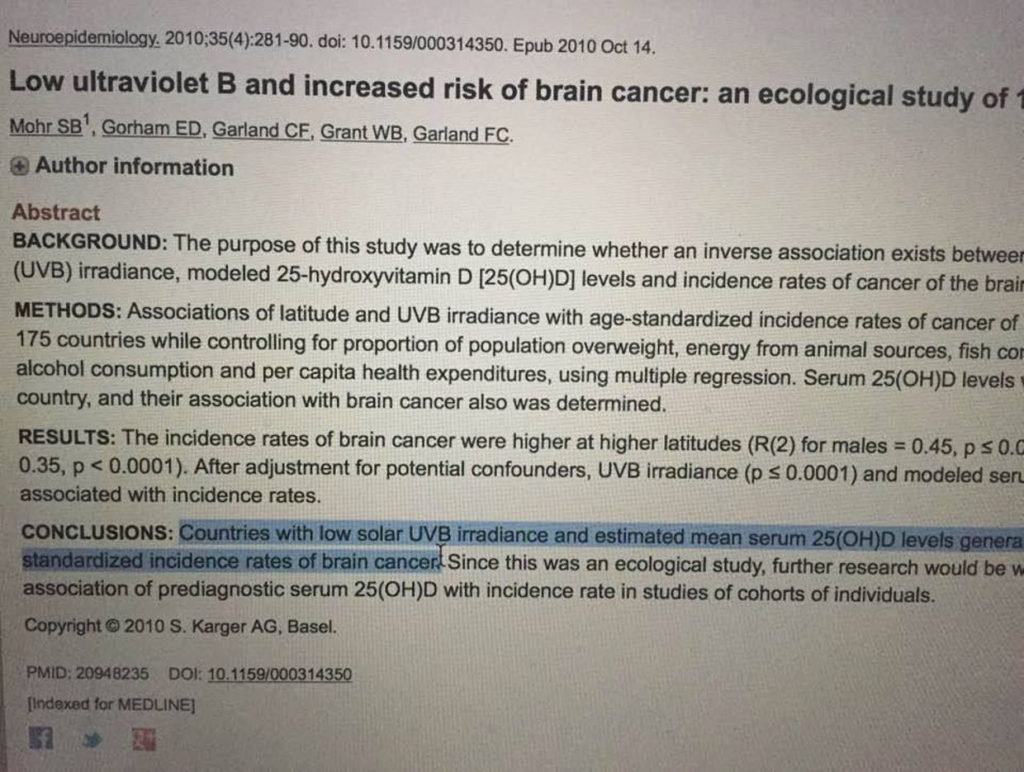
This is why ALL cancers are always linked to poor solar exposure too in tissues. Sunlight’s frequencies are why this specificity matters in cancer. Sunlight uses non linear frequencies (UV/IR) to dictate the movement in hydrogen in bio-molecules using a molecular resonance mechanism I taught you in previous patreon blogs. This is why I am so interested in the physics of sunlight. Bio-chemists miss this quantum nuance and that is why they think pathways and substrates are all that matter. Not true.
How do I know I am correct? Well it links to this paper here. Under glucose deprivation in human cells are all pseudohypoxic to a degree. They then use glutamine to derived fumarate, malate, and citrate. They ARE significantly increased in these cases.
We know this from isotopic studies on carbon 13 flow in pathways. This isotope thing is a big deal folks. The Carbon 13 labeling patterns has demonstrated that glutamine is fully capable of generating an alternative energy-pathway in cells with a matrix that can no longer make DDW by using a glutaminolysis pathway involving a glucose-independent TCA cycle.
This is why the Warburg shift likes glutamine so much. It is a key source of new H+ for the TCA intermediates that are all deuterated by chronic blue light exposure via the eyes. Glutamine acts like methylene blue does in a matrix. It is capable of switching out heavy hydrogen for light hydrogen like Szent Gyorgi found back in the 1930’s. It lightens the load of the matrix of deuterium.
Erlenmeyer, Schoenauer, and Stillmann confirmed the vitamin C proton observations of Szent Gyorgi when they found in 1936 that during the establishment of the equilibrium reaction below:
Succinate + methylene blue = fumarate + leucomethylene blue
under the influence of deuterated succinic dehydrogenase, an exchange of the carbon – bound hydrogens of the succinate also takes place. In this way the “heavy” succinate gradually becomes “lighter.” The same thing was found in malate and fumarate too. This was the key old paper that told me the movement of hydrogen has to be specific and controlled by sunlight if we are to avoid oncogenesis.
Methylene blue (MB) performs best under red light frequencies when it is tested in the lab. It does even better in sunlight. Why is that? Sunlight is 42% red and this red light is the only light in the spectrum of the sun that is capable pf penetrating human tissue deeply to get to every mitochondria where hydrogen exists. Red light in the sun goes from 600nm-3100nm but our eye only sees 600-1000nm. Our mitochondria senses all red frequencies everywhere to control the flow of protons in cell water.
Glacial melt water has something in common with matrix water. It is how nature allows cells to control protons by making protons do something that the sun cannot control. Remember the photoelectric effect only allows light and electrons to work in unison. So cells decided to use DDW to make their EZ in the matrix the strongest it could be on Earth. Deuterium in water diminishes the size of the EZ. This is why, in my opinion, the matrix and chloroplast favor it. Gerry Pollack has never done this experiments to prove there is a difference in bulk and DDW, but others have done INS experiments that lead me to this conclusion.
If the EZ with deuterium is capable of excluding protons……..it really would exclude deuterium and this explains why life is the way it is. This is why the ATPase is prejudiced to the use of H+. Moreover, it explains why deuterium fractionation can be used as an optical switch to control growth and metabolism in the retina or open the door to mitochondrial diseases. Deuterium inflows radically alter the metabolic rate of tissues by causing small swellings in the mPTP pore. This area is normally protected by the EZ of the MINOS.
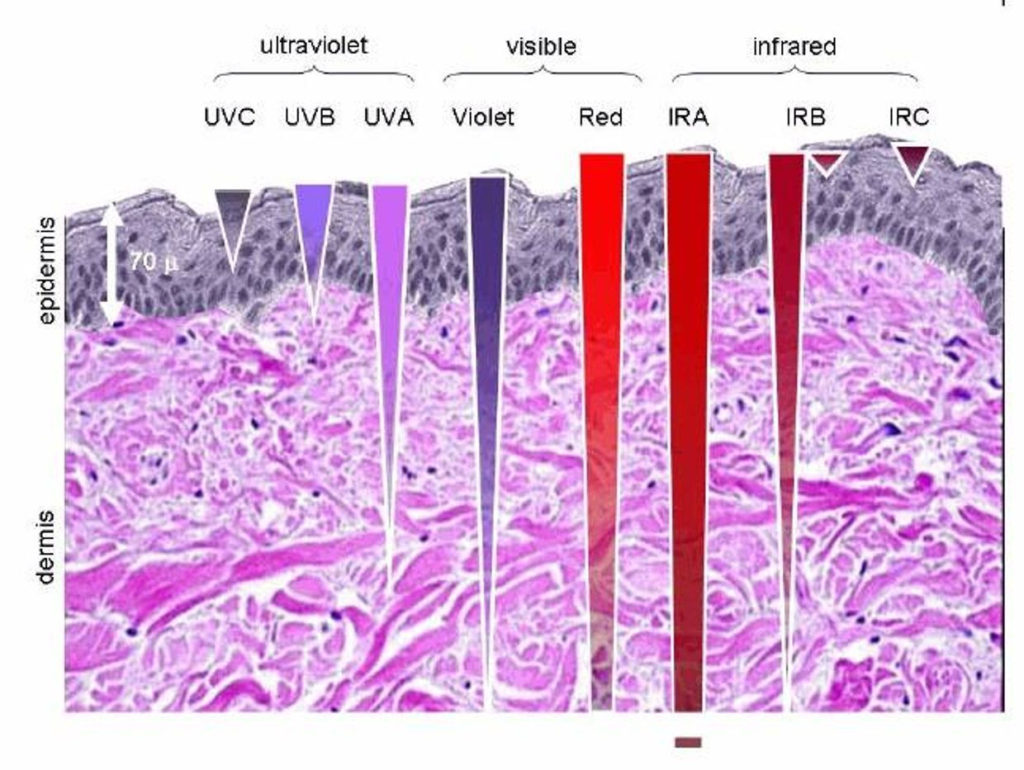
Methylene Blue is capable of performing substrate-level phosphorylation (SLP) by removing deuterium from the TCA intermediates and results in the production of ATP independent from the ATP synthase (ATPase). This means that MB can function outside the TCA cycle to lighten the hydrogen load when the matrix is weigh down with deuterium. Too bad oncologist do not know this, huh?
Bio-chemists never ask the simplest questions when they are faced with a clinical dilemna because they don’t observe nature well and they do not see or treat patients. DOCTORS DO. Have I told you that Albert Szent Gyorgi was a DOCTOR of MEDICINE? Below is a picture of someone who has no clue how to use MB correctly to repair these defects because his mouth should not be blue. Refuse to be ‘bullet proof’ and become a black swan mitochondriac instead. You’ll be a lot more wise. Most supplements and manufactured fats are all deuterium bombs.

Bio-chemists and many bulletproof bio-hackers rely too much on what other idiots have told them without looking why something really happens. Clinicians like myself do not do this because we see patients who have disease we cannot explain based upon what we were taught and we learned that when you do not know something you have to ask better question to figure it out. You must tap your curiosity to satisfy your curiosity’s hunger. When we want to understand why brain cancer is on the rise all of a sudden out of the ‘blue’, we ask questions of the bio-chemists teaching us. So I went to find a few of these guys in the medical school and I asked some questions.
I am a neurosurgeon who treats gliomas. These are horrible diseases for patients and surgeons. One thing I learned in medical school and residency is that glioma incidence in young people is rising fast. I ask why, and nobody seemed to know why. Then I found out these new glioma tumors are mostly spontaneous cases without any associated genetic defects. I found that curiosu consider oncology believes most cancer are caused by gene defects. I asked why. Nobody knew. Then I found out many of these de-novo gliomas all have links to other weird causes of familial cancer syndromes. I asked the bio chemists why this was the case and they did not know.
Then I went to the hospital and talked to the pathologists who did autopsy’s on these patients once they died.. I asked the pathologists why this set of circumstances was occuring in gliomas, and it was clear nobody had any answers for me. I asked why isn’t anyone studying this? I got blank looks from all the PhD’s. Bio-chemists only study what they can get $$$$ for and apparently none of them thought that these hydrogen movements in gliomas I found was big deal. I guess most of them thought it would be a tough sell to the NIH?
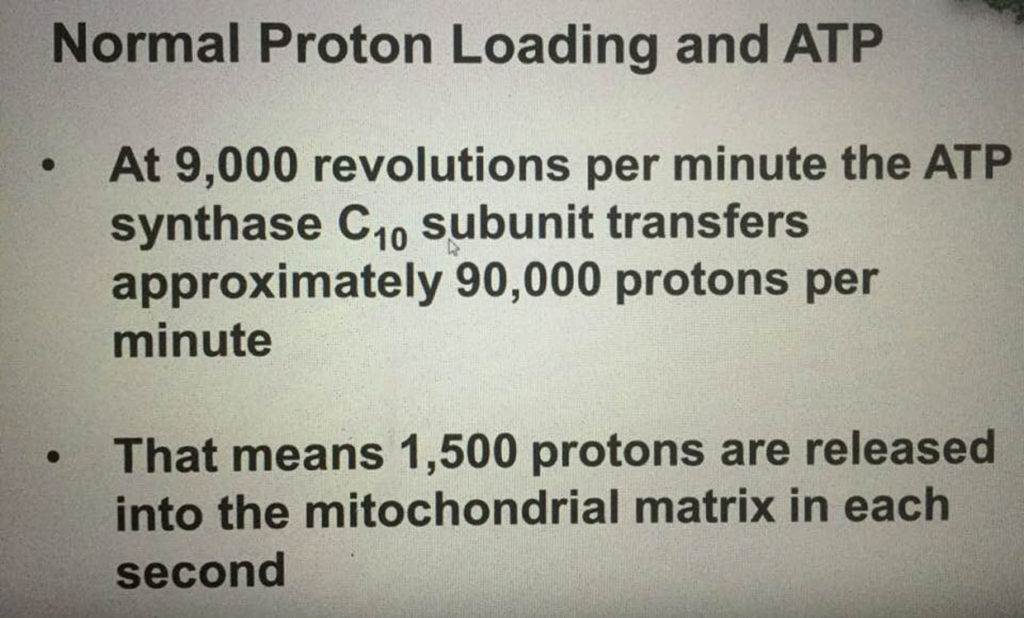
So in 2000, I opened up a bio-chemistry book and began to look for a pattern to explain this curious set of circumstances in brain cancer in young people. I found big clues in how hydrogen moved in glycolysis. What was the thing that caught my eye about this? Why does it take cells ten enzymatic steps to cleave 6 carbon sugar into two 3 carbon pyruvate when it appears way easier to do in a lab with a lot less steps? Then I asked why does it take 9 enzymatic steps to remove two CO2’s of molecules in the TCA cycle? That is when I realized why Szent Gyorgi and Pauling where so transfixxed on hydrogen biology and vitamin C in the 1930’s.
So I went and carefully read all their papers. I found my answer. The reason this was happening was a light effect. It was quantized, and it was tied to H+ movement, caused by solar frequencies that humans were no longer getting routinely.
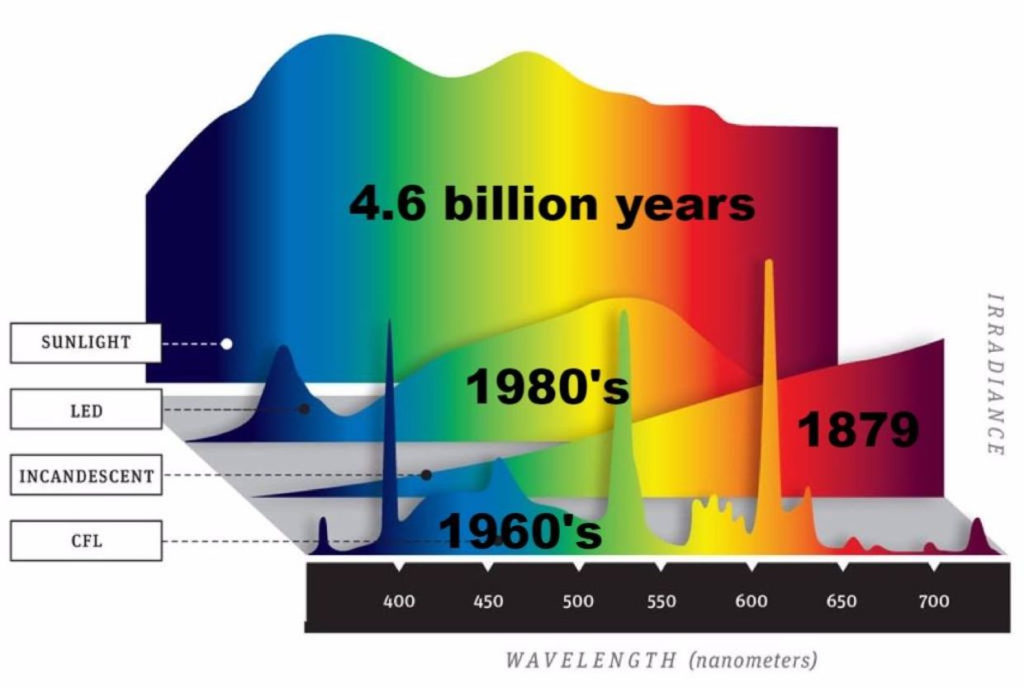
I then found out that mutations of genes involved in the tricarboxylic acid (TCA) cycle such as fumarate hydratase, succinate dehydrogenase or isocitrate dehydrogenase 1 or 2 are causally linked to familial cancer syndromes (Bensaad et al., 2006) or spontaneous low grade gliomas and acute myelogenous leukemia (Dang et al., 2010). Then I answered my own question about why I was seeing milennials with spontaneous low grade gliomas.
I realized the environment we have built for modern humans today is not what it was in the 1930’s any longer. It is now like it is in a bio-chemsts lab, blue lit and filled with RF and microwaves. I went read about bio-physics of RF and microwaves on hydrogen and it was here I learned that RF radically effects H+ motions called precession in bio-chemical pathways. See, we neurosurgeons use MRI a lot, so I knew a lot about MRI’s already. In MRI image generation, we use pulsed RF frequencies to change the precession of hydrogen atoms in tissues to get images of the CNS. Most tumors show up on T 1 imaging by having an altered signal. The relaxing signal is different than regular tissues. I asked the radiologist why and they did not know. I figured it out by reading their literature. Deuterium is alters T1 imaging because of the kinetic isotope effect shields 96 H+ protons from this effect and this ruins our ability to see normal water protons. This is what we see in degenerative disc diseases cases on T1 imaging. This was how I figured it out. I started to notice all my patients had altered water content in their discs and complaining of muscular back pain. I realized that all patient with back pain were patients loaded with deuterium and this was causing imaging artifacts.
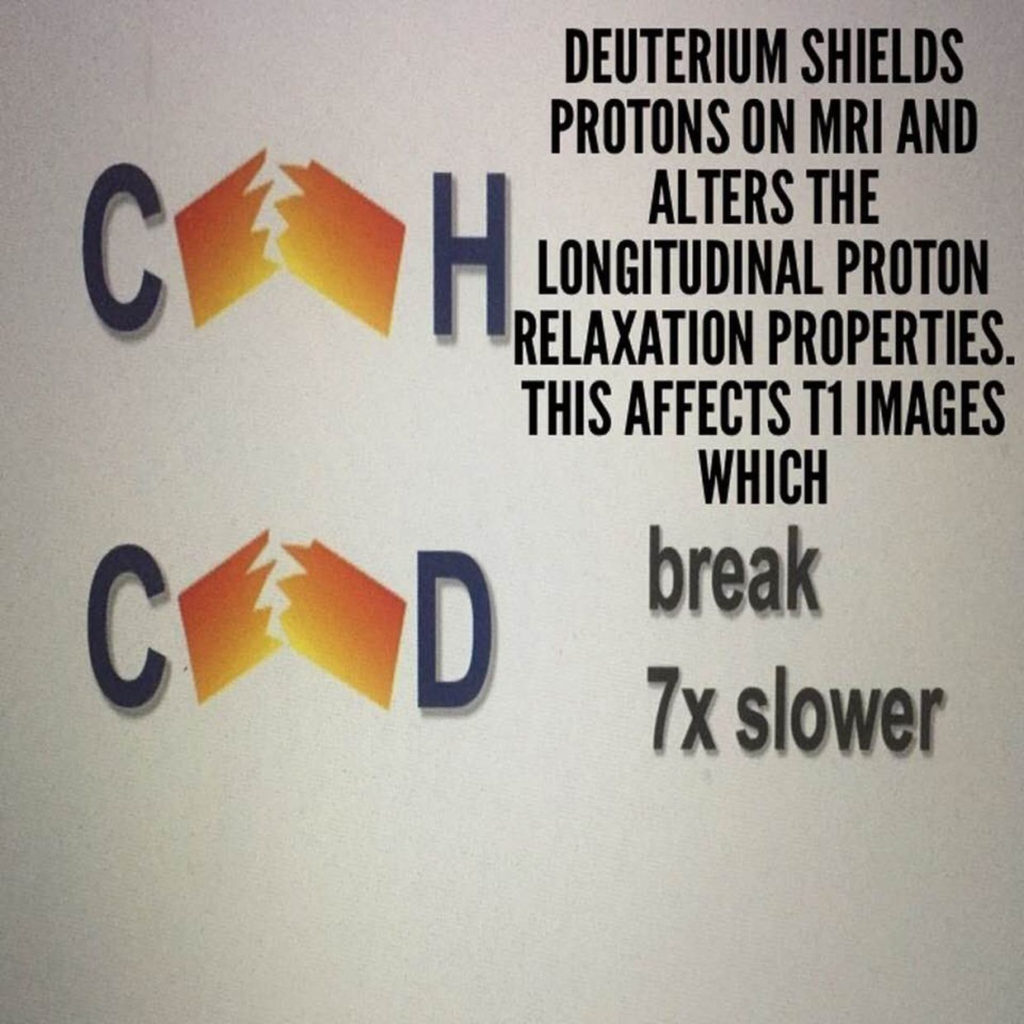
DOES FAKE FOOD AND GMO’S AFFECT GLIOMA’S TOO?
All fake foods made in a lab are made using hydrogenation. The process in a lab has no photosynthetic controls. Hydrogenation refers to the treatment of substances with molecular hydrogen (H2), adding pairs of hydrogen atoms to compounds (generally unsaturated compounds). These usually require a catalyst for the reaction to occur under normal conditions of temperature and pressure in a lab. Most hydrogenation reactions use gaseous hydrogen as the hydrogen source, but mitochondria and cells clearly have developed alternative sources do this as I am laying out very carefully. The reverse of hydrogenation, where hydrogen is removed from the compounds, is known as dehydrogenation. This is what cells to do foods as I showed you above in glycolysis. How cells do it is specific. Industry does it way different. Hydrogenation differs from protonation or hydride addition because in hydrogenation the products have the same charge as the reactants.
Hydrogenation reactions generally require three components: the substrate, the hydrogen source, and a catalyst. The same is true in a mitochodria or in a lab. How it occurs is the difference. In a lab of a big food company, the reaction is carried out at varying temperatures and pressures depending on the catalyst and substrate used. The hydrogenation of an alkene produces an alkane. The addition of hydrogen to compounds happens in a syn- addition fashion, adding to the same face of the compound and entering from the least hindered side. Generally, alkenes will convert to alkanes, alkynes to alkenes, aldehydes and ketones to alcohols, esters to secondary alcohols, and amides to amines via hydrogenation reactions.
The TCA cycle uses some of these reactions as the picture above showed.
Catalysts of Hydrogenation must be controlled by the matrix
Generally, hydrogenation reactions in a Bog Food lab will not occur between hydrogen and organic compounds below 480 degrees Celsius without metal catalysts. Mitochondria have iron and molybdenum (Mo) on the inner mitochondrial membrane. The use of Mo on this membrane is a remnant from its bacterial origins. I’ve written a whole blog on Mo fo rthis reason. It is a special transition metal. This is why the inner mitochondrial membrane, from and evolutionary perspective, is very different than the outer mitochondrial membrane which resembles a classic eukaryotic membrane which has no molybedenum in it. I’m surprised Nick Lane has not figured that one out yet to be truthful. Mo has a ton of electrons in it to help act as a catalyst at low pressures and low temperatures. In a Big Food lab catalysts are responsible for binding the H2 gas molecule. They do not screen their gas source for dueterium content. I’ve asked them. The catalysts they use facilitate the reaction between the hydrogen and the substrate (usually LA) used by the food company to create food. Platinum, palladium, rhodium, and ruthenium are known to be active catalysts which can operate at lower temperatures and pressures. In big food industry I found research is ongoing to procure non-precious metal catalysts which can produce similar activity at lower temperatures and pressures. They don’t seem to know about Molybdenum at all when I asked. It works at one atmosphere and body temperatures really well. It however, also doesn’t work as well in space, and this is why astronauts are getting sick as they enter space too long. They all come back with mitochondrial changes in their retina which I detailed in my Vermont 2017 talk. In space, their matrix cannot perform these hydrogen proton recycling reactions either as they can on Earth and NASA appears to be unaware of it.
Nickel-based catalysts, such as Raney nickel, have been developed, but still require high temperatures and pressures and these won’t work in space and they are too expensive for industry to make money from their cheap fake foods. All fake foods allow for a ton of deuterium to be added to their carbons. This is why fake food and GMO foods are to be avoided by mitochondriacs who understand that proton recycling is the key thing to get right in a matrix.
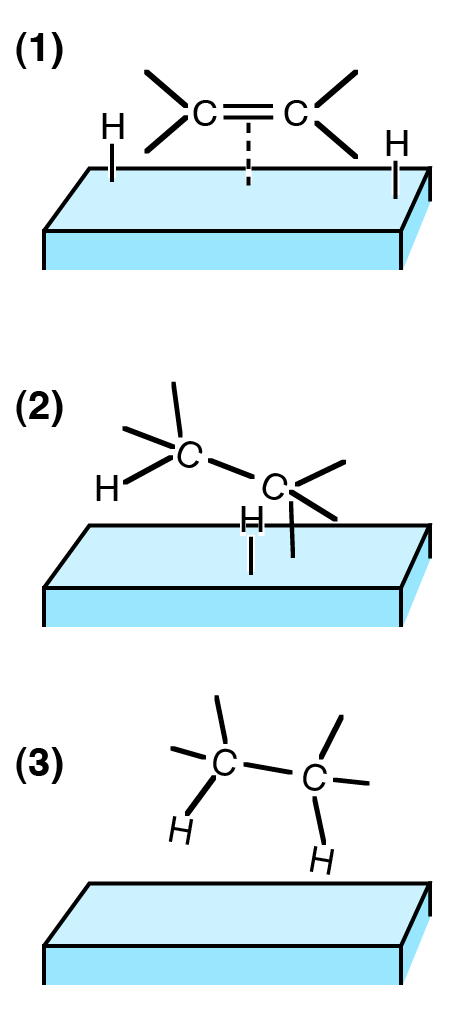
Heterogeneous Catalysis: The hydrogenation of ethylene (C2H4) on a solid support is an example of heterogeneous catalysis.
Catalysts can be divided into two categories: homogeneous or heterogeneous catalysts. Homogeneous catalysts are soluble in the solvent that contains the unsaturated substrate. In the fake food industry they use polyunsaturated fats as their substrate. Photosynthesis is a lot more discriminating in controlling hydrogen movement in the process as she makes her substrates for metabolism for oxidation in the matrix. This is why the matrix has so many unusual steps for glycolysis and for the TCA cycle.
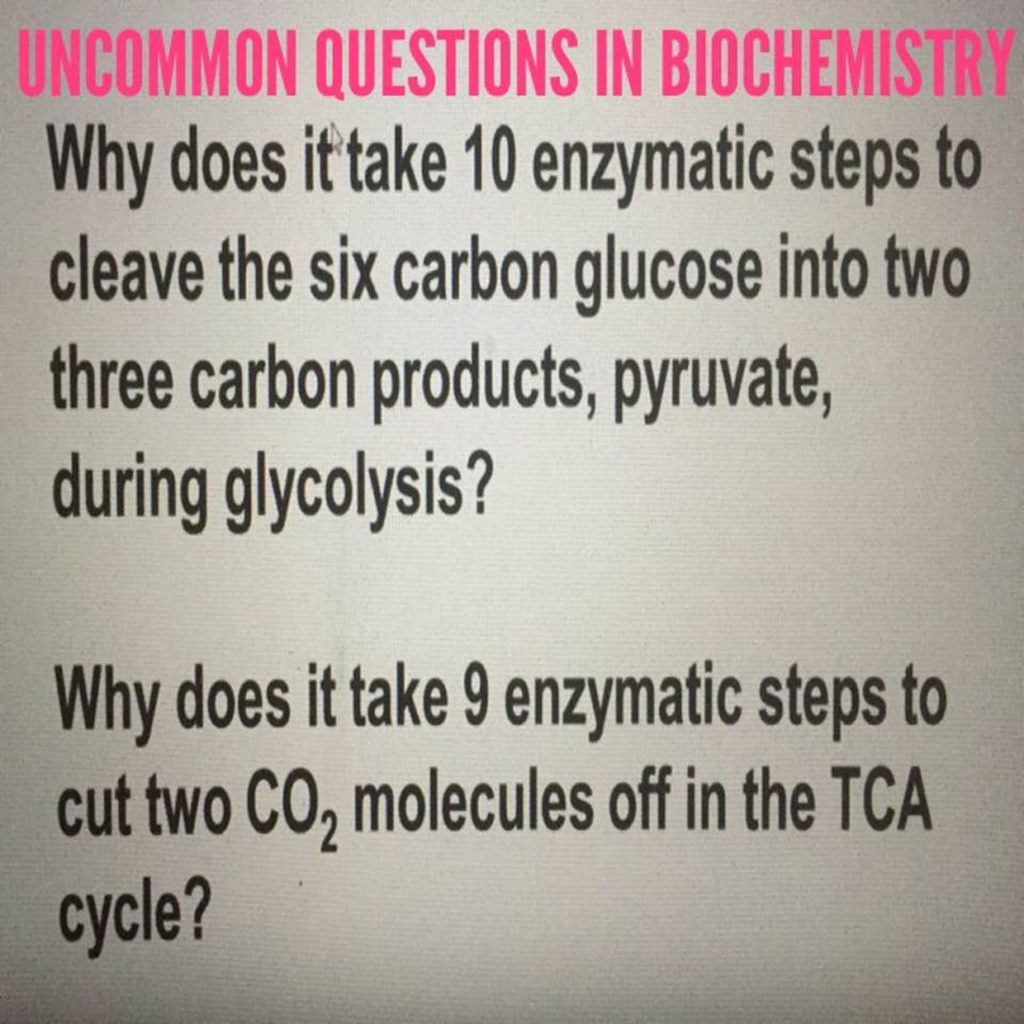
Heterogeneous catalysts are found more commonly in industry, and are not soluble in the solvent containing the substrate. Often, heterogeneous catalysts are metal-based and are attached to supports based on carbon or oxide. The choice of support for these materials is important, as the supports can affect the activity of the catalysts and this is what affects ligher hydrogen or deuterium additions to the process. Hydrogen gas is the most common source of hydrogen used and is commercially available. Cells use hydrogen from the bio-molecules of glucose and fat as their source of hydrogen. All of these sources are processed by PHOTOSYNTHESIS!!! Those three pathways are called C3, C4, and CAM pathways and all of them have variable amounts of deuterium fractions in them as previous blogs have laid out. The TCA cycle is in charge of sorting through all these fractionations as this blog is laying out.
Hydrogenation is an exothermic reaction, releasing about 25 kcal/mol in the hydrogenation of vegetable oils and fatty acids in a lab. For heterogenous catalysts, the Horiuti-Polanyi mechanism explains how hydrogenation occurs. First, the unsaturated bond binds to the catalyst, followed by H2 dissociation into atomic hydrogen onto the catalyst. This is where deuterium can be added to the fake food. Food compaies do not fractionate their hydrogen gas because they have no idea nature does it in the water cycle that is one of the main substrates of photosynthesis because it consumes rain water which is deuterium depleted by nature.
In industry, then one atom of hydrogen attaches to the substrate in a reversible step, followed by the addition of a second atom, rendering the hydrogenation process irreversible in the lab. In the mitochondrial matrix, photosynthetic hydrogenation is reversible to C02 and DDW.
In the fake food industry for homogeneous catalysis, the metal binds to hydrogen and deuterium to give a dihydride complex via oxidative addition. The metal binds the substrate and then transfers one of the hydrogen atoms from the metal to the substrate via migratory insertion. Deuterium is far more reactive and this results in incomplete hydrogenation. This is a big problem for the final food product because it makes trans-fats which are not naturally found in eukaryotic membranes. Transfats do not work well with DHA in the lipid rafts electrically. Hydrogenation is important in processing vegetable oils because most vegetable oils are derived from polyunsaturated fatty acids of C3 plants. Partial hydrogenation reduces most, but not all, of the carbon-carbon double bonds, making them better for sale and consumption. The degree of saturation of fats changes important physical properties such as the melting range of the oils to create foods that last for ever on a shelf in a supermarket; an example of this is how liquid vegetable oils become semi-solid at various temperatures.
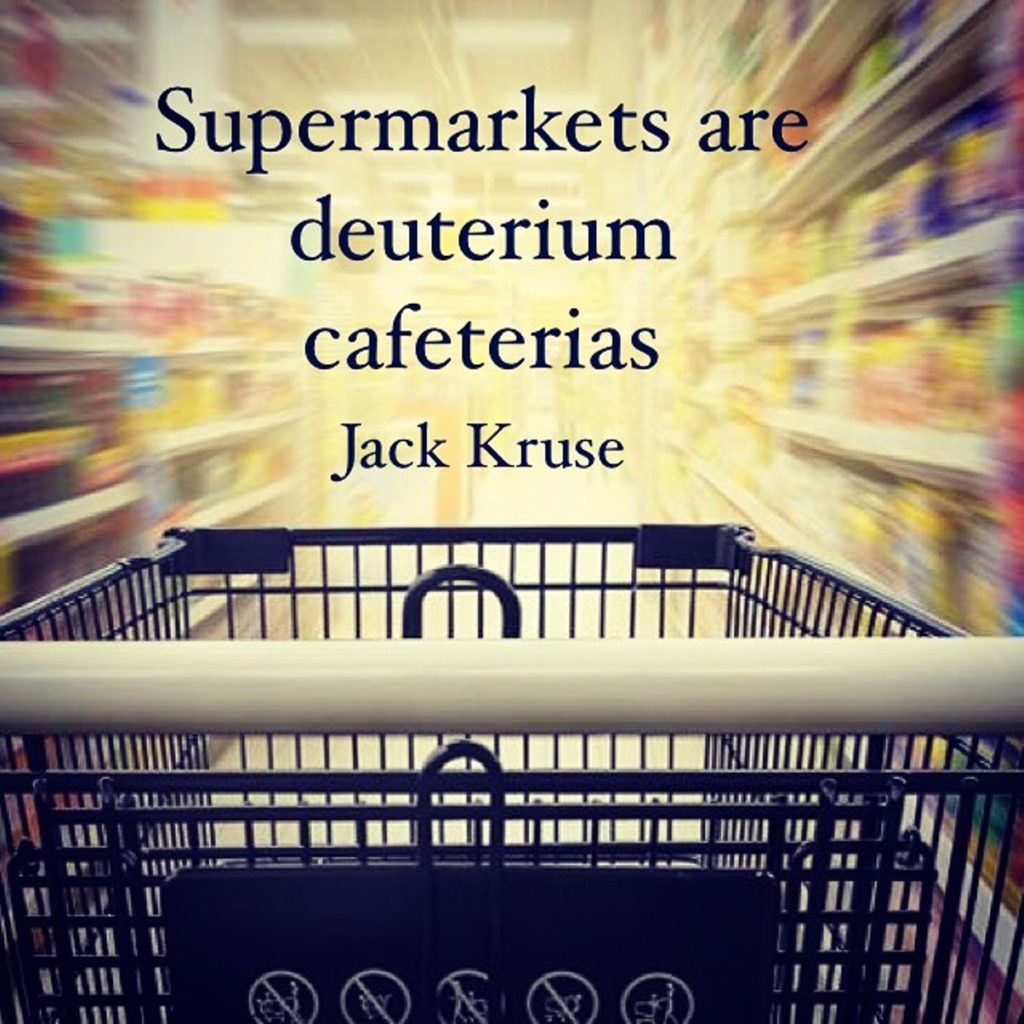
Incomplete hydrogenation of the double bonds in big food industry has health implications because of it deuteration; some double bonds can isomerize from the cis to the trans state. This isomerization occurs because the trans configuration has lower energy state than the cis configuration. This appears to be why nature spends so many steps on the processing of hydrogen in nature. The trans isomers have been implicated in contributing to pathological blood circulatory disorders like atherosclerosis and heart disease. The higher the deuterium fractionation in the fats the more wind up in arteries and more calcium build up occurs. This makes blood vessel less reactive to UVA light close to the surface of the skin and as a result the vessels make less nitric oxide (NO). Because the vessels make less NO, there is less vasodilation and as a result the blood pressure of patients rise. Most people with high deuterium fractionation in their tissues have high blood pressure, diabetes, obesity, and fatty liver with many deuterate triglycerides (TG) in their blood. The TG’s cannot be filtered by the liver’s ATPase because of doubled atomic mass so this is why visceral fatty liver develops. The cause of metabolic syndrome is a high deuterium fractionation usually above 130 ppm on breath testing. Here is a link that shows how electromagnetic fields lead to calcified vessels.
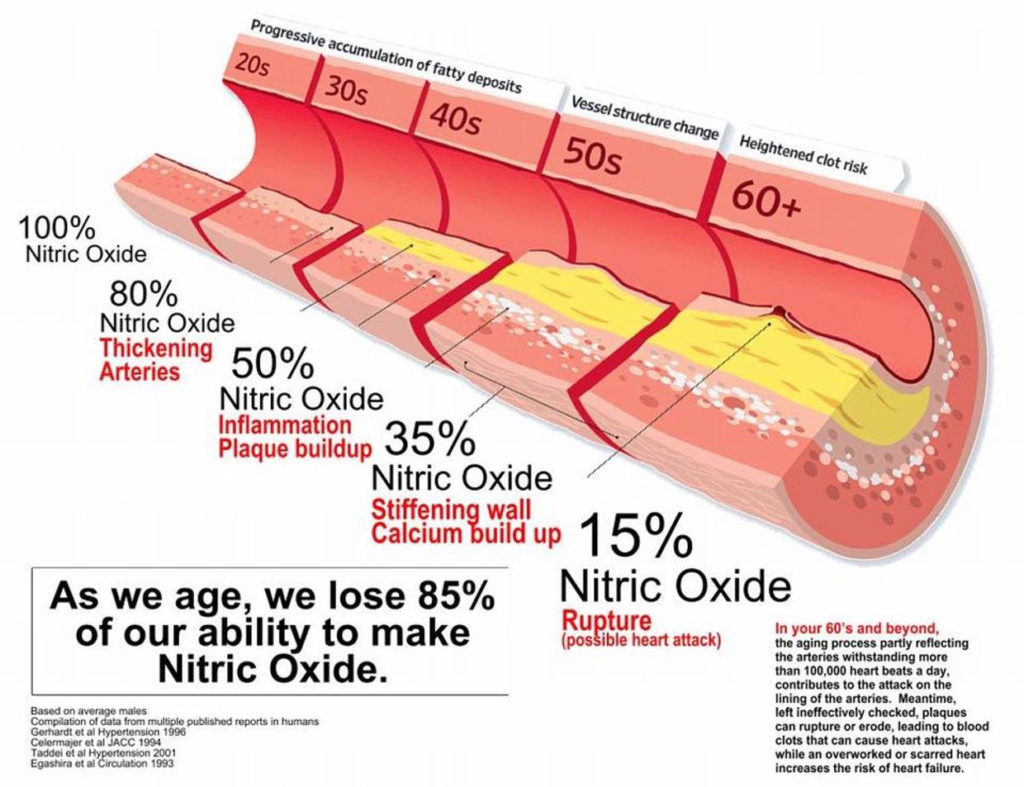
VIDEO OF SOMEBODY ELSE ASKING THE SAME QUESTIONS, but not understanding how it all fits together.
WHAT ABOUT THE nnEMF LINK TO BRAIN CANCER?
Microwaves are well know to vibrate and rotate the bonds in water and this causes heat release and oscillations of water. Mitochondria make water and they sit in the water they make. This means they way they move is affected by microwaves and this stops them from burning fat properly in the TCA. Then I relaized why everybody was getting fat before they got cancer. This is how microwave oven work, they jiggle the water in food to heat it. It turns our cell phones do the same thing in our brain when we put it up to our head. Then I read Frey and Addey work out of UCLA in the 1960’s that showed microwaves and RF cause upregulation of AMPk and blood brain barrier leakiness. This was repeated by Volkow in 2011. I realized immediately why technology was causing gliomas. It ruined how glycolysis and glutamine were feeding TCA intermediates and this in turn ruined hydrogen movements in cells. You feeling me now patrons?

CITES:




